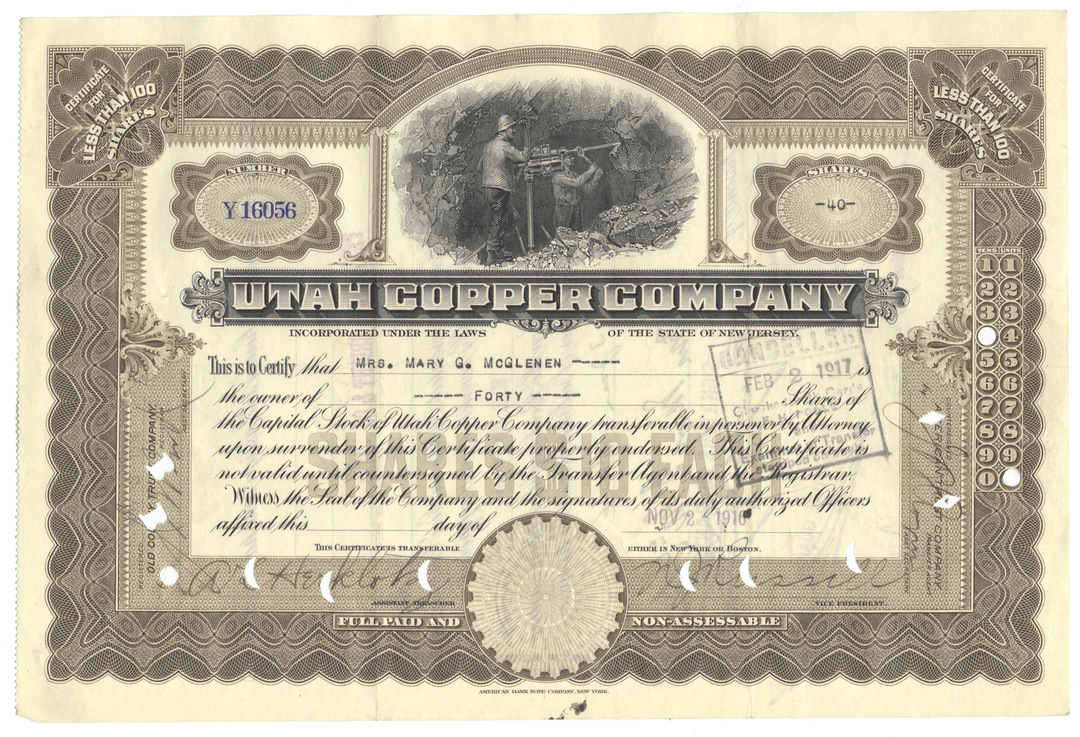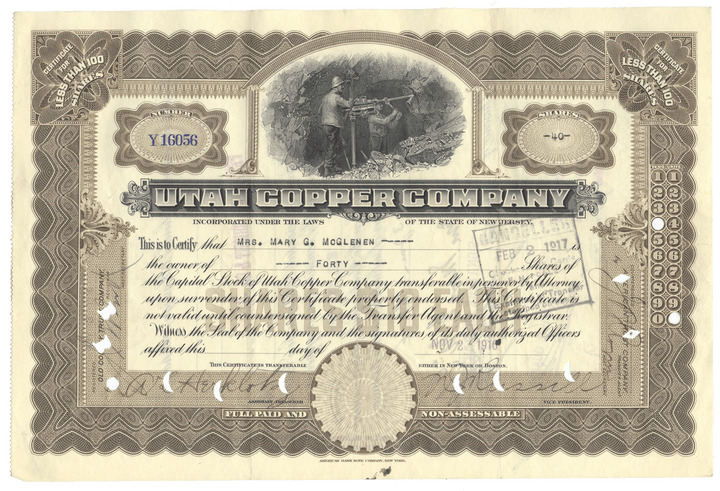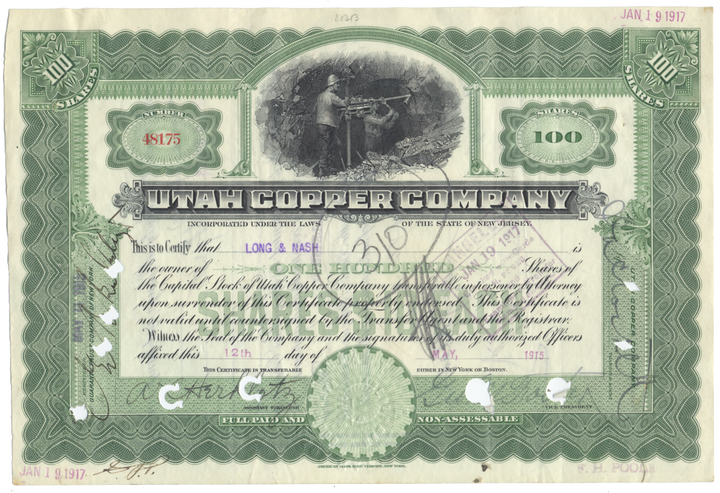Utah Copper Company
- Guaranteed authentic document
- Orders over $75 ship FREE to U. S. addresses
Product Details
Company
Utah Copper Company
Certificate Type
Capital Stock
Date Issued
1910's
Canceled
Yes
Printer
American Bank Note Company
Signatures
Hand signed
Approximate Size
10 1/2" (w) by 7" (h)
Images
Representative of the piece you will receive
Guaranteed Authentic
Yes
Additional Details
NA
Historical Context
The Utah Copper Company had its start when Enos Andrew Wall realized the potential of copper deposits in Bingham Canyon, 15 miles southwest of Salt Lake City, Utah in 1887. He acquired claims to the land and started underground mining. In the mid-1890s, metallurgist Daniel C. Jackling and mining engineer Robert C. Gemmell inspected the property and liked the prospects. Both men examined Wall's properties and recommended open-pit mining. In 1898, Samuel Newhouse and Thomas Weir formed the Boston Consolidated Mining Company.
Jackling and Wall formed the Utah Copper Company on June 4, 1903, with Charles L. Tutt Sr., Charles MacNeill, Spencer Penrose, Boies Penrose, Tal Penrose, and Dr. R.A.F. Penrose as investors. MacNeill was named president, Spencer "Speck" Penrose was named secretary-treasurer, and Jackling was named general manager. The company immediately started a pilot mill at Copperton.
With financing from Guggenheim Exploration, the first digging began in 1906. The same year, the Kennecott Mines Company was formed in Alaska, named after explorer and naturalist Robert Kennicott. A smelter was also started at Garfield, Utah by the American Smelting and Refining Company (ASARCO) to refine the Bingham Canyon ore.
In 1907, the Utah Copper mill in Magna started operation. Utah Copper and Boston Consolidated merged in 1910. Five years later in 1915, Kennecott acquired a 25% interest in the company. In 1915, to dilute the cost of railroad construction to support the mines, and to find new ventures for the capital produced by the Alaskan mine, Kennecott Copper Corporation was incorporated from the various financial interests involved. By this time, the Guggenheim Exploration was already actively working copper mines in Chile and Utah. Upon Kennecott's creation, they merged their Braden Copper Company property in Chile, as well as 25 percent of the Utah Copper Company, into Kennecott.
These actions resulted in Kennecott taking possession of Braden's El Teniente, the world's largest underground copper mine, located in the Chilean Andes. Founded by William Braden and E.W. Nash of New York City, the Braden Copper Company had started mining there in 1906.
In Utah, the Bingham and Garfield Railway opened in 1911 to transport local ore, replacing the Denver and Rio Grande Railroad's line. In 1936, Kennecott acquired all the assets of the Utah Copper Company.
Related Collections
Additional Information
Certificates carry no value on any of today's financial indexes and no transfer of ownership is implied. All items offered are collectible in nature only. So, you can frame them, but you can't cash them in!
All of our pieces are original - we do not sell reproductions. If you ever find out that one of our pieces is not authentic, you may return it for a full refund of the purchase price and any associated shipping charges.









